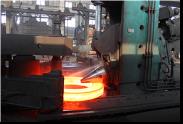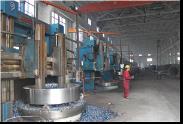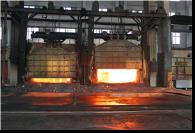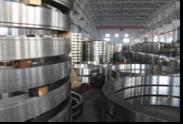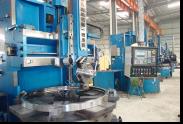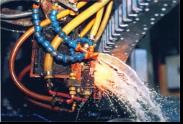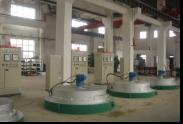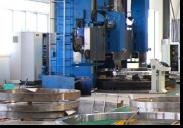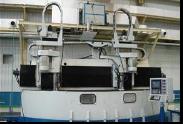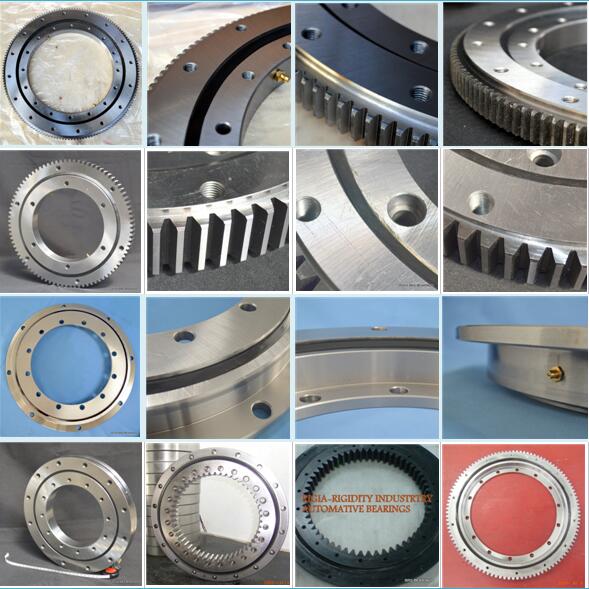Slewing Bearing Manufacturing Process
BRS Bearing started to produce slewing bearing in 2005. Our slewing bearing manufacturing process and technique have been constantly improving, and our engineering & design department will propose to you the complete solution for bearings. BRS only uses the most reliable raw materials, and thanks to our process of grinding, we offer users slewing rings with superb precision.

Forging 
Turning 
Heat Treatment 
Aging Treatment 
Rough Machining 
Quenching 
Tempering and Stabalization 
Precise Machining 
Final Process 
Cleaning and Assembling 
Inspection 
Packaging
Forging
BRS bearing selects high-quality suppliers and will conduct random inspections of raw materials during cooperation. The raw material must meet the Chinese national standards, and its mechanical properties should meet the product design requirements.
The forgings shall be inspected by quality inspectors after entering the site. The appearance of the bearing rings shall have no obvious defects, and the outer dimensions shall have sufficient allowance to be processed to the finished product.
Rough Machining (turning of slewing bearing manufacturing process)
Rough turning removes the oxide skin of parts and reserves a margin according to the size of the finished product. BRS will arrange ultrasonic flaw detection on forgings after turning to detect whether there are internal defects in the material.
Quenching and Tempering Treatment
Quenching and tempering are very important in the slewing bearing manufacturing process. This technique can improve the slewing bearing rings' mechanical properties. After quenching and tempering, check whether the hardness of the part is qualified.
Precise Machining
The raceway is turned into shape, and different dimensional allowances are reserved according to different raceway structures to ensure that the influence of machining deformation and quenching deformation can be eliminated, while ensuring that the allowance is as small as possible.
Raceway Quenching and Tempering
After the raceway is quenched, the hardness of the quenched area should reach HRC55-62, with an effective depth of no less than 3mm. After quenching, the tempering stabilization treatment is carried out to eliminate quenching stress, reduce subsequent processing deformation, and reduce the risk of raceway cracking.
Teeth Processing
According to different requirements and applications, gear teeth machining methods including gear shaping, gear hobbing, gear milling, etc. The accuracy level can meet 7-10 grades. BRS usually will do teeth grinding, which can reach higher accuracy grades (4-6 grades).
Some applications have requirements for the strength of the tooth, so high-frequency quenching can be carried out on the tooth surface, tooth root, and tooth top position according to different needs. The hardness can meet HRC44-55, the depth can meet 1.5mm, and the tempering stabilization treatment is carried out after quenching. Eliminate quenching stress and reduce the risk of cracking at quenched parts. After stabilization, the hardness and cracks should be tested.
Finished Grinding
The slewing ring produced by BRS must be finely ground, and the ovality, flatness, and wall thickness of the bearing ring can be effectively controlled to ensure the accuracy of finished bearings.
Assembly
After cleaning the ring, install the corresponding size and quantity of rolling elements, retainers or spacers, sealing strips, and other accessories according to the requirements of the drawings. Rotate after installation to detect whether the bearing can rotate flexibly and whether there is abnormal noise. After the assembly is completed, inspections and detailed records should be made according to related standards.
Clean and Packaging
According to the production standard or the special requirements of the customer, add grease in the slewing bearing, then apply anti-rust oil on its surface. After wrapping the slewing bearing with the packing tape, put it in the plywood case horizontally for delivery.

